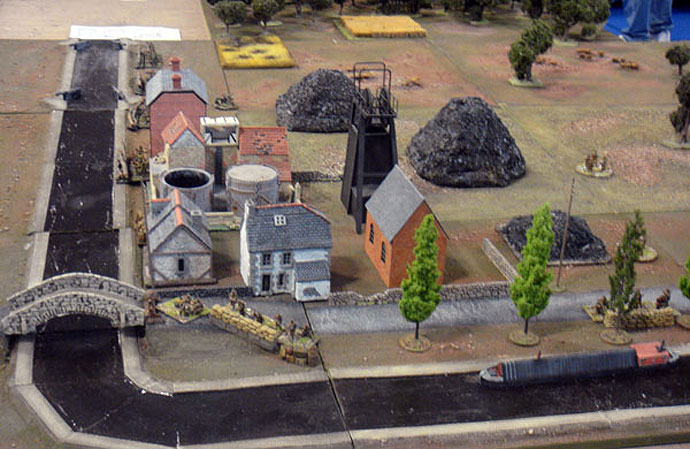23rd August 1914 – The Battle of Mons
The Battle of Mons marked the first engagement between the British and German Armies in World War One. I’m not going to describe the battle of Mons here. There are many explanations on the internet that are far more eloquent than I could ever hope to be. A great place to start with learning about World War One is The Long Tail.
The 15th Brigade was positioned as reserve to the 5th Division. They faced two main problems. Firstly the environment was not suited to warfare as it was dotted with “narrow streets, gardens, slag heaps, factories and railway works”, according to the regimental history. Secondly the line they were covering was very wide, which meant that there were gaps between units. Gleichen remarks that the regulation distance between units was 1000 yards but the 15th Brigade was strung out over 3 miles (5280 yards). When that happens there is usually confusion, both through lack of communication and the fact the the enemy penetrate those gaps and attack from the flanks.

On the morning of the 23rd, the 15th Brigade was split in two. Half the companies (C and D) were sent to Wasmes. The other half remained in reserve in billets in Dour. They tried to maintain routine; a parade and service was planned for 10am and even plans for billeting were drawn up by Battalion Headquarters during the day. But these were abandoned by 12pm and, eventually, the rest of the Dorsets were instructed to get their kit ready.
By 12:40pm the German guns could be heard. Gleichen remarks, not for the first time, that they had no idea of the scale of forces against which they were arrayed. He reports that “there was perhaps a corps in front of us, but as a matter of fact there were three, if not four corps.” The British were outnumbered by about 3 to 1 .
The Dorsets were dug into shallow trenches in amongst the Bedfords. By 4:10pm things were not going well for the 3rd Division ahead of them. Although they had acquitted themselves admirably and had cause considerable damage to the Germans, they were simply overwhelmed, were running out of ammunition and severely depleted in strength. The Dorsets received the news that the 3rd Division was retiring to the south of Mons and that the 15th Brigade was to block the Mariette-Paturages Road.
At 5pm the Dorsets entered combat for the first time. Enemy shells began to land beyond their trenches. At 5:30pm D Company reported that enemy troops were 1000 yards north of their trenches. A little later S.A.A. (small arms ammunition) carts were requested. At 7:30 C Company sighted enemy scouts. Things were hotting up.
Meanwhile companies A and B had arrived in Wasmes and were initially hidden under a railway arch near the station, before being moved into fields and entrenching. Wasmes station is no longer there and, judging by the map in the History 1st Bn. The Dorsetshire Regiment 1914-1919, part of the railway line isn’t there anymore either. However, I think you can see remnants of the line in the satellite photography, and I’ve marked this in red on the map.
Later the evening the Dorsets had the added trouble of dealing with civilians trying to cross the lines. They arrested several, including “a hunchback, and he was terrified when we searched him—we found a clip of five German cartridges in his pocket.”
Digging in, assisted by the local miners, and distributing the ammunition became their priority towards the end of the day. It was clear that the Germans would attack at any moment in force. They even started putting in parapets to the rear of their trenches.
The Germans were working their way around the 15th Brigade and at some time in the evening had managed to position a machine gun on a slag heap to the Dorset’s rear. This was to cause them a certain amount of bother the following morning.